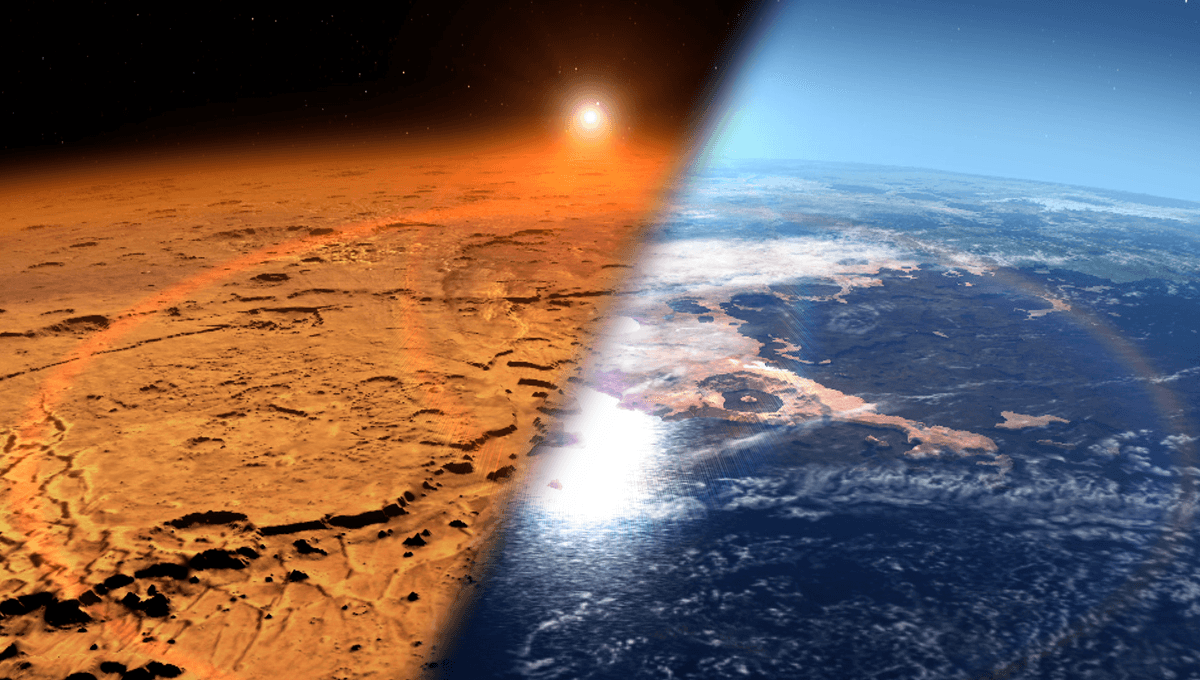
Billions of years ago, Mars had a thick atmosphere and water, but in both cases, just a tiny amount remains today. Both ended up escaping to space, with some of the water going underground. Now, researchers argue that some of the atmosphere, maybe up to four-fifths, is also trapped in rocks as the Red Planet changed – it might also solve a second mystery about Mars.
The loss of the Martian atmosphere is a big uncertainty. Today, it is about one percent of what we have here on Earth – but in the past might have been just as thick. The other mystery is the presence of methane in the Martian atmosphere, which appears to have seasonal variations possibly related to changes in pressure and temperature. The new work suggests that the carbon dioxide of the ancient atmosphere got trapped in clays.
The water might have contributed to a slow chain reaction where clay materials could have trapped carbon dioxide, and in those rocks converted it to methane. This reaction is seen on Earth, and based on how it works here and the expected extent of clay on Mars, it might have sucked in 80 percent of the carbon dioxide of the ancient atmosphere.
“Based on our findings on Earth, we show that similar processes likely operated on Mars, and that copious amounts of atmospheric CO2 could have transformed to methane and been sequestered in clays,” study author Oliver Jagoutz, professor of geology in MIT’s Department of Earth, Atmospheric and Planetary Sciences, said in a statement sent to IFLScience. “This methane could still be present and maybe even used as an energy source on Mars in the future.”
Back when Mars was wet, for a billion years you had water interacting with a mineral called olivine, which is rich in iron. The oxidation of it made Mars its iconic red color, but would have also liberated hydrogen. The hydrogen would have combined with the carbon dioxide in the water to form methane. At the same time, olivine would change into serpentine and then in smectite, trapping the methane inside.
“These smectite clays have so much capacity to store carbon,” lead author Dr Joshua Murray added. “So then we used existing knowledge of how these minerals are stored in clays on Earth, and extrapolate to say, if the Martian surface has this much clay in it, how much methane can you store in those clays?”
Ultimately, it will depend on how much clay actually is on the surface of Mars, but there are certainly regions rich in them across the planet. And that might mean a large faction of trapped methane.
“We find that estimates of global clay volumes on Mars are consistent with a significant fraction of Mars’ initial CO2being sequestered as organic compounds within the clay-rich crust,” Murray explained. “In some ways, Mars’ missing atmosphere could be hiding in plain sight.”
The paper is published in the journal Science Advances.
Source Link: Mars Rocks May Contain Ancient Atmospheric Carbon – And We Could Use It For Fuel